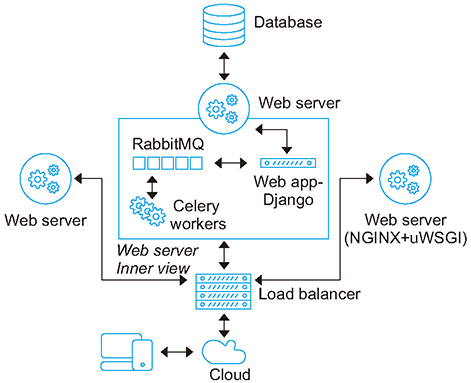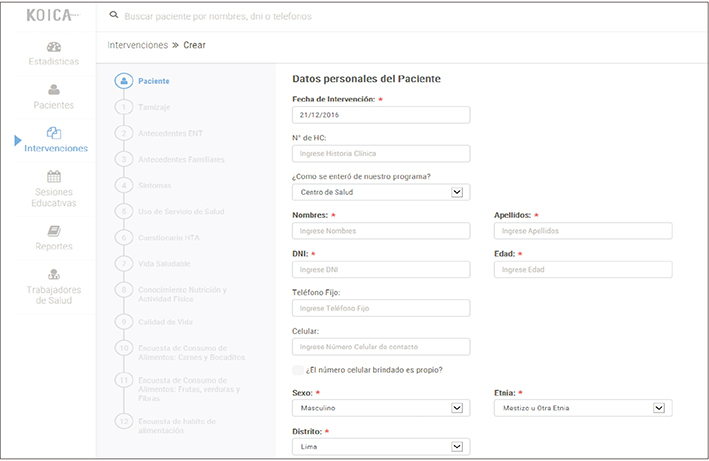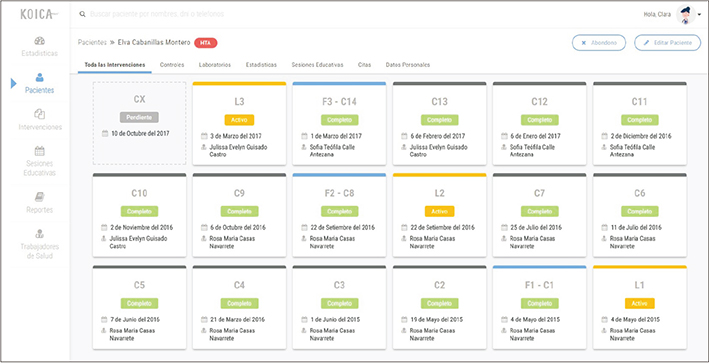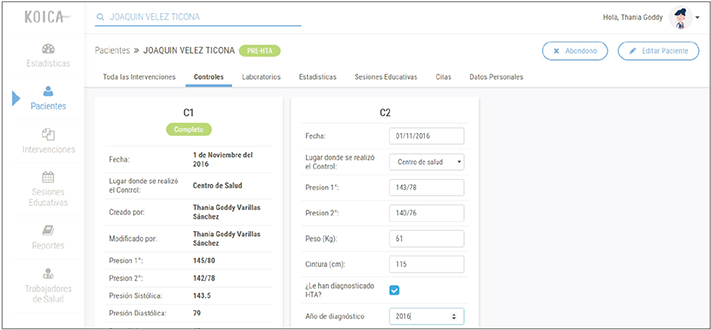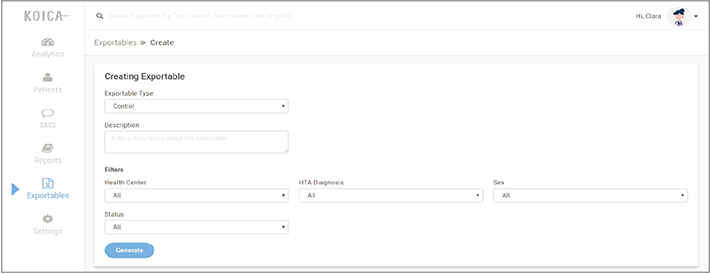Healthc Inform Res.
2019 Jan;25(1):41-46. 10.4258/hir.2019.25.1.41.
Development of a Web Database System for a Comprehensive Hypertension Management Program in the Primary Health Care Setting of Urban Areas of Peru
- Affiliations
-
- 1Department of Health Administration, College of Health Science, Yonsei University, Wonju, Korea. ewnam@yonsei.ac.kr
- 2Yonsei Global Health Center, Wonju, Korea.
- 3DGNEST, Lima, Peru.
- KMID: 2434535
- DOI: http://doi.org/10.4258/hir.2019.25.1.41
Abstract
OBJECTIVES
The objective of this case report is to introduce the development process, structure, characteristics, and effectiveness of the web database (DB) system developed for the hypertension management program in the primary health care setting in the low-income urban areas of Peru.
METHODS
A Korean research team cooperated with a Peruvian IT startup company to develop a web DB system to improve the data management of the hypertension management program. The entire web application infrastructure was hosted using the Amazon Web Service. Two different web platforms were established for the user groups of health workers and researchers (program managers).
RESULTS
A total of 2,827 program participants were registered in the web DB system until December 2017. Health professionals can input the participant data while providing consultation to the program participants, and the data is accumulated in the web DB in real time. Input errors or data loss is prevented by setting restrictions in the data entry system. During the 4-year project period, 7,696 hours of working time and USD 39,536.48 for data management were saved as the result of web DB system utilization.
CONCLUSIONS
The developed web DB system contributed to improve the health condition of the health program participants by providing necessary information to the health professionals at the right time. This case report could be a reference for other researcher to develop web databases for their own context, especially in developing countries.
Keyword
MeSH Terms
Figure
Reference
-
1. World Health Organization. Framework and Standards for country health information systems. 2nd ed. Geneva, Switzerland: World Health Organization;2008.2. Varshney U. Pervasive healthcare computing: EMR/EHR, wireless and health monitoring. New York (NY): Springer;2009.3. Jones SS, Rudin RS, Perry T, Shekelle PG. Health information technology: an updated systematic review with a focus on meaningful use. Ann Intern Med. 2014; 160(1):48–54.
Article4. Chaudhry B, Wang J, Wu S, Maglione M, Mojica W, Roth E, et al. Systematic review: impact of health information technology on quality, efficiency, and costs of medical care. Ann Intern Med. 2006; 144(10):742–752.
Article5. Fritz F, Tilahun B, Dugas M. Success criteria for electronic medical record implementations in low-resource settings: a systematic review. J Am Med Inform Assoc. 2015; 22(2):479–488.
Article6. Hossain N, Yokota F, Sultana N, Ahmed A. Factors Influencing Rural End-Users' Acceptance of e-Health in Developing Countries: A study on Portable Health Clinic in Bangladesh. Telemed J E Health. 2018; 04. 17. DOI: 10.1089/tmj.2018.0039. [Epub].
Article7. Program for Appropriate Technology in Health (PATH). An interim review of the Health Information Systems Programme (University of Oslo) with recommendations for future action. Seattle (WA): PATH;2016.8. Giovanella L, Feo O, Faria M, Tobar S. Health systems in South America: challenges to the universality, integrality and equity. Rio de Janeiro, Brazil: South American Institute of Governance in Health (ISAGS);2013.9. Perez-Lu JE, Iguiniz Romero R, Bayer AM, Garcia PJ. Wawared Peru: reducing health inequities and improving maternal health by improving information systems in health. Rev Peru Med Exp Salud Publica. 2015; 32(2):373–377.10. Blaya JA, Cohen T, Rodriguez P, Kim J, Fraser HS. Personal digital assistants to collect tuberculosis bacteriology data in Peru reduce delays, errors, and workload, and are acceptable to users: cluster randomized controlled trial. Int J Infect Dis. 2009; 13(3):410–418.
Article11. Nam EW, Shin TS, Song YL, Park KS, Song TM, Kim MK, et al. Building web database for WHO healthy city Wonju. Korean J Health Educ Promot. 2007; 24(3):119–128.12. Nam EW, Park JS, Choe EH, Kim GN. A study on the application of web database for healthy city Wonju. Korean J Health Serv Manag. 2012; 6(1):219–229.
Article
- Full Text Links
- Actions
-
Cited
- CITED
-
- Close
- Share
- Similar articles
-
- A Study on the Development of a Database for a Health Care System: Focusing on Health Care Management for Hypertensive Patients and Middle-aged Women
- Current Status and Future Directions of Primary Care in the World: Insights from Australia
- Factors Influencing the Self-management Behaviors of the Elderly with Hypertension in the Local Community
- Comparison of Healthy Life Style and Chronic Disease Management between Urban and Rural Older Adults
- Development and Application of Motivation-enhancing Self-management Program for Rural Aged with Hypertension

